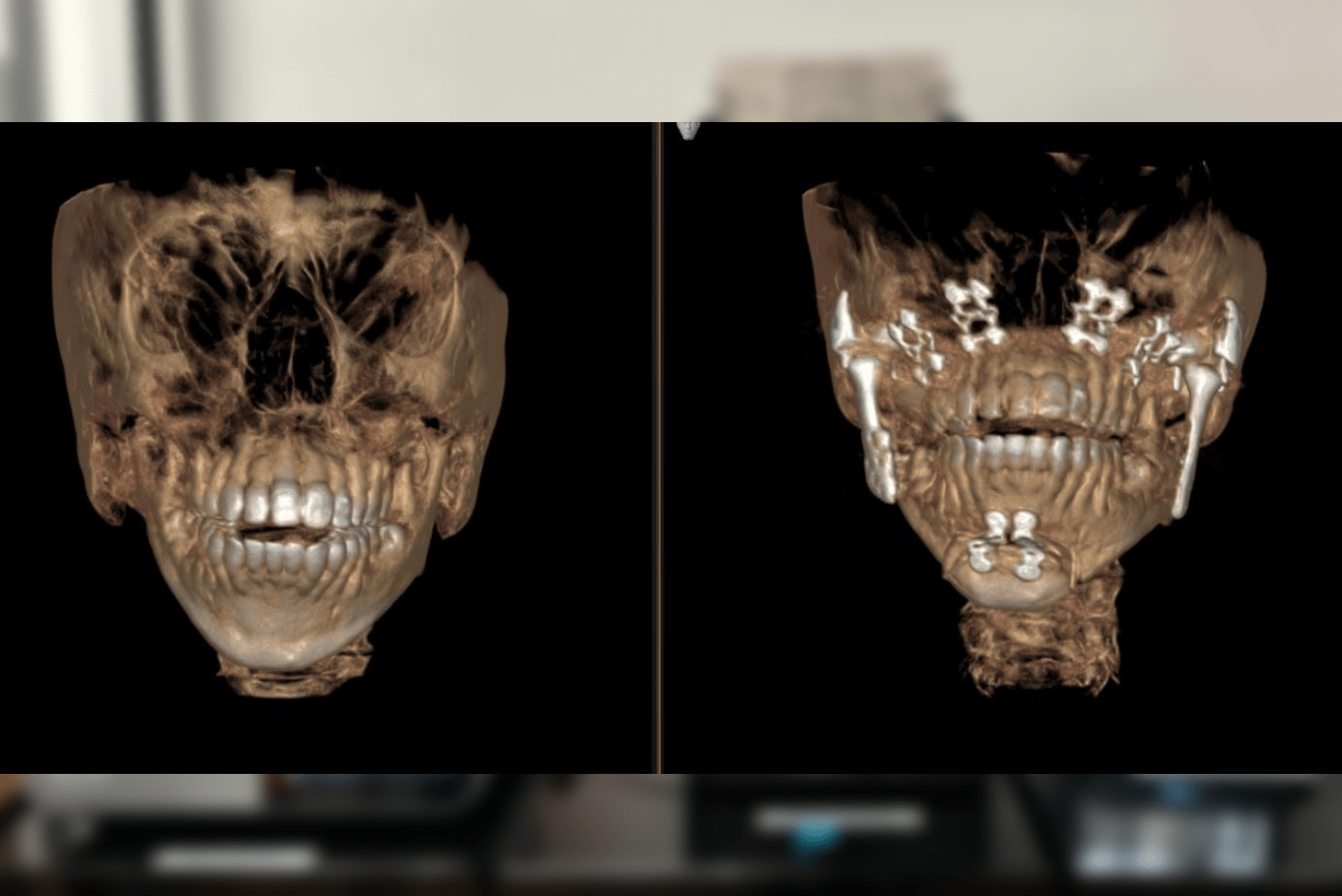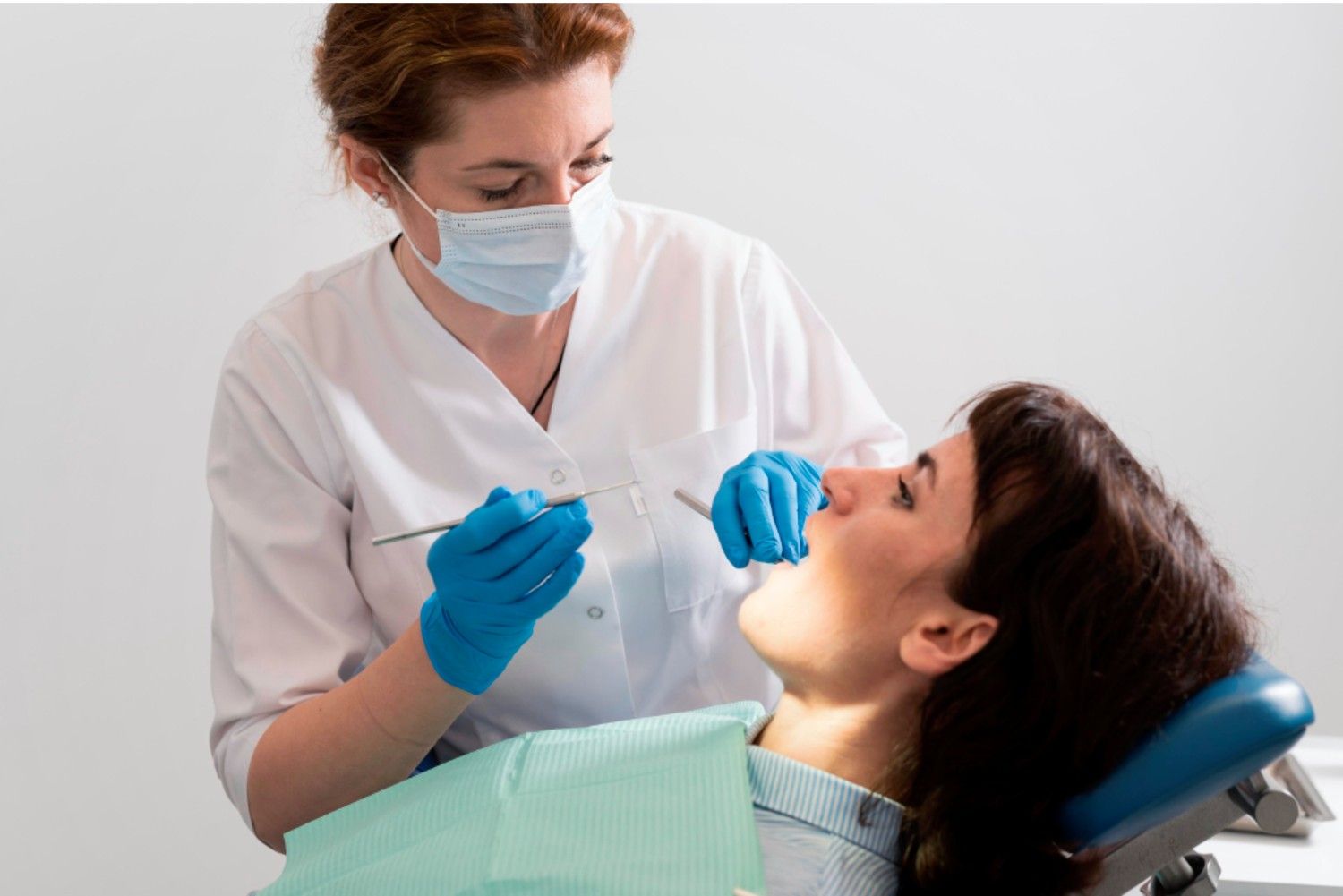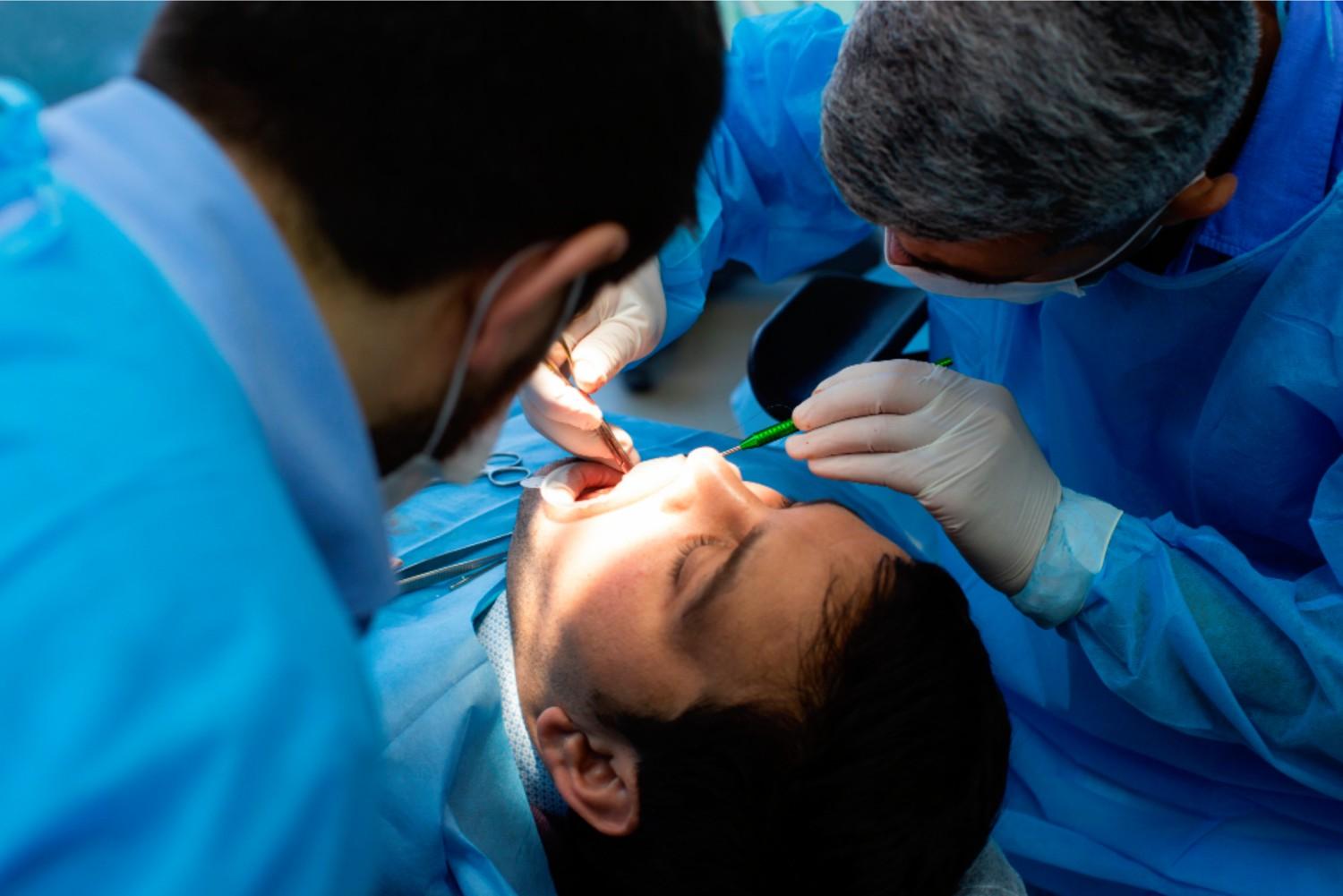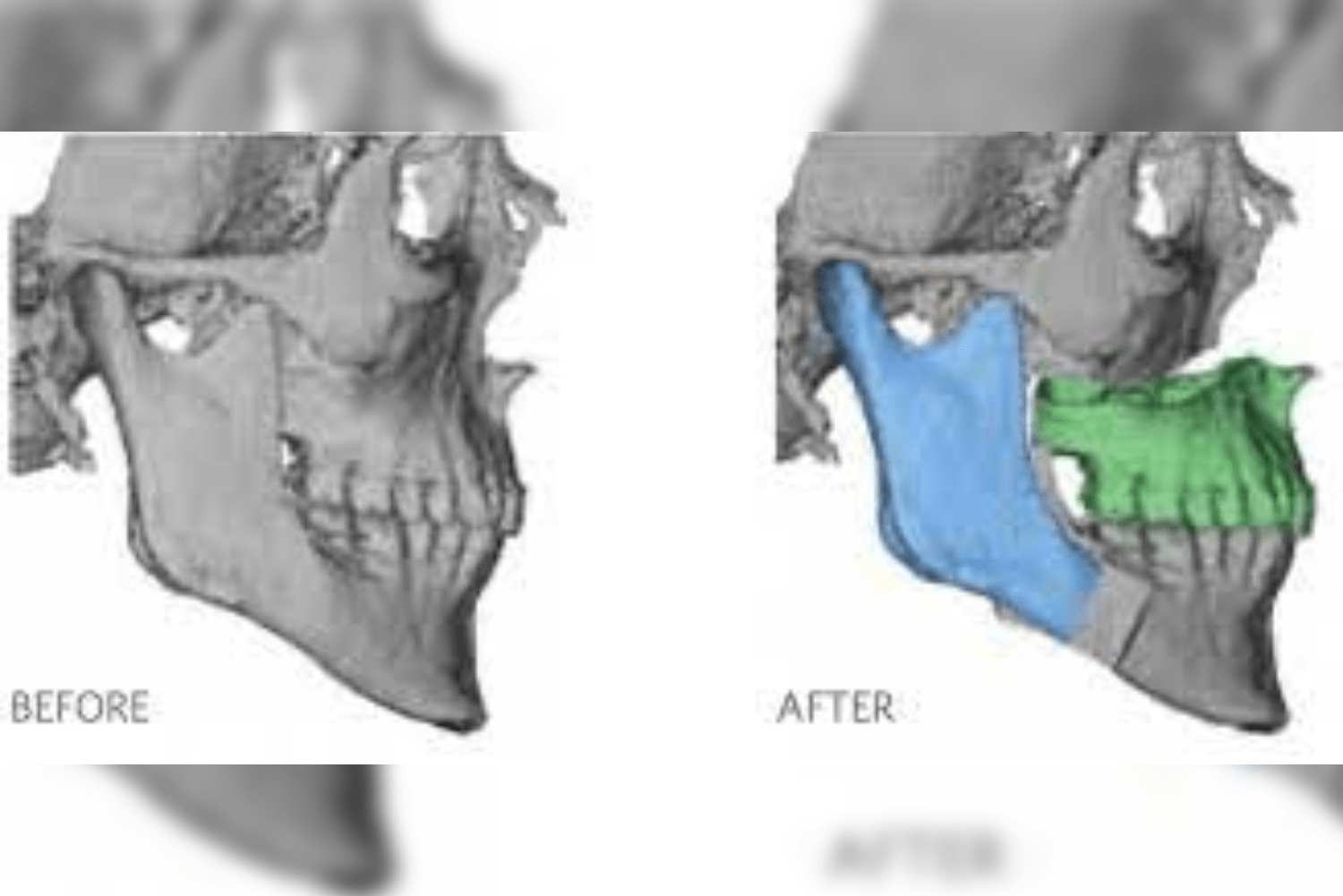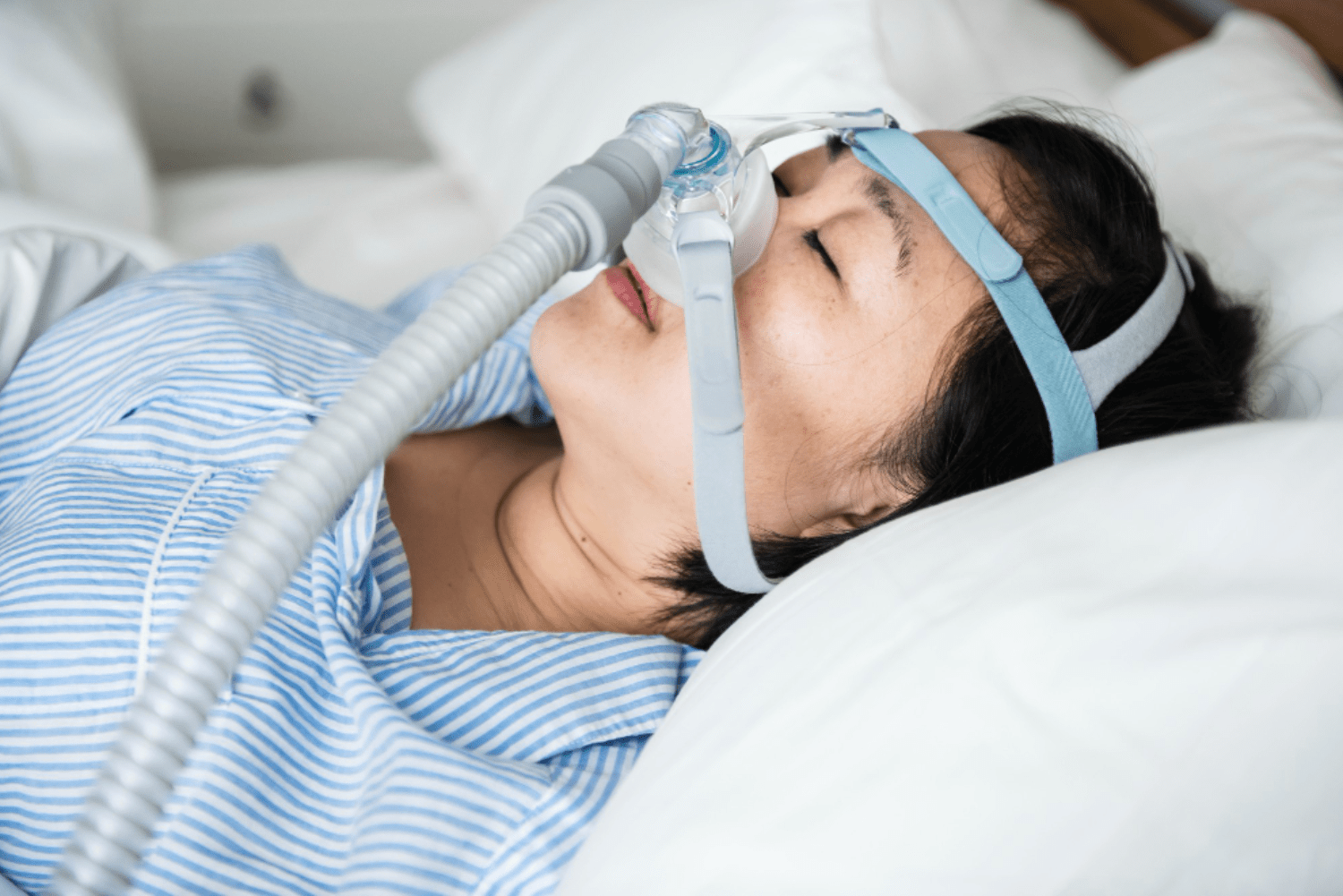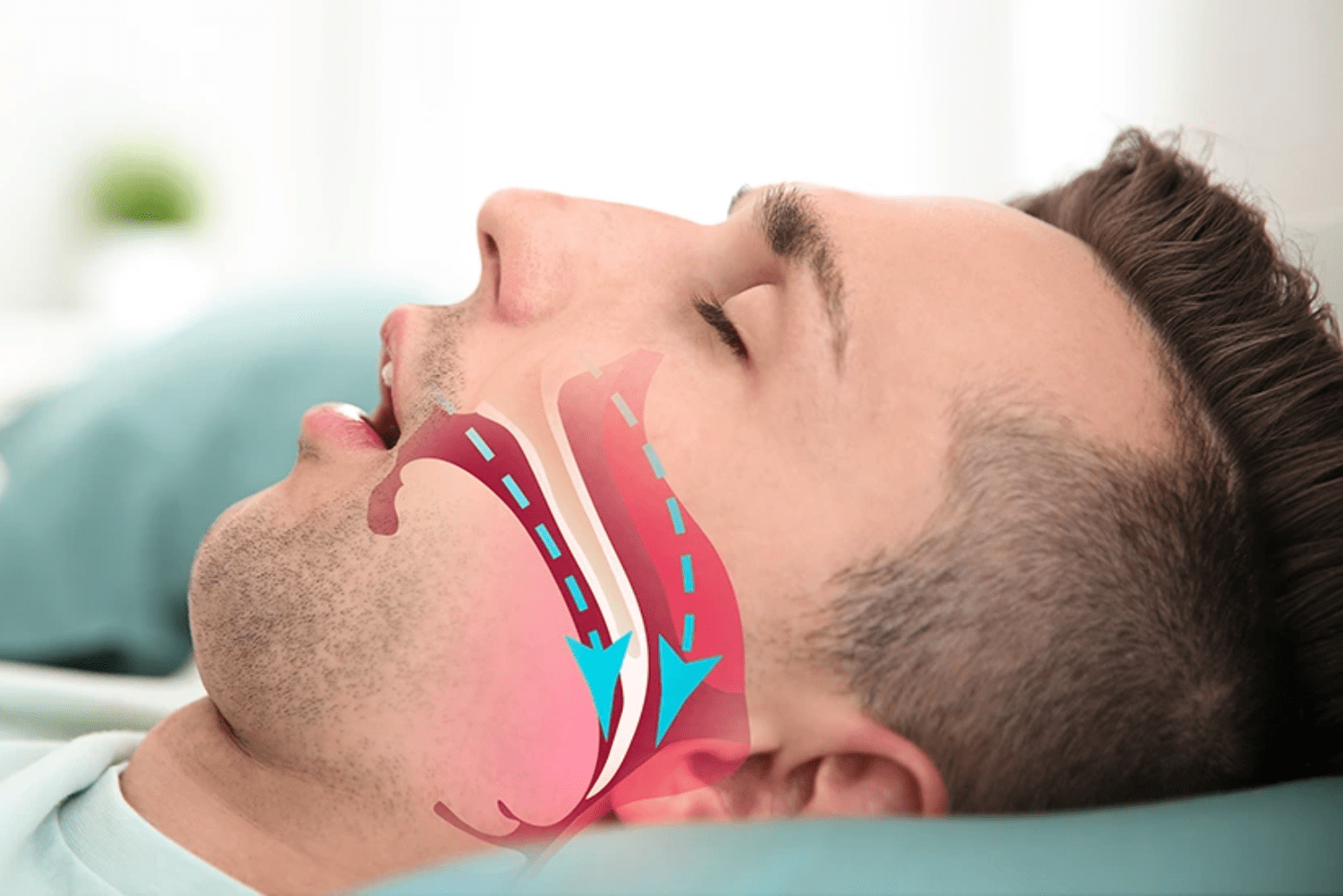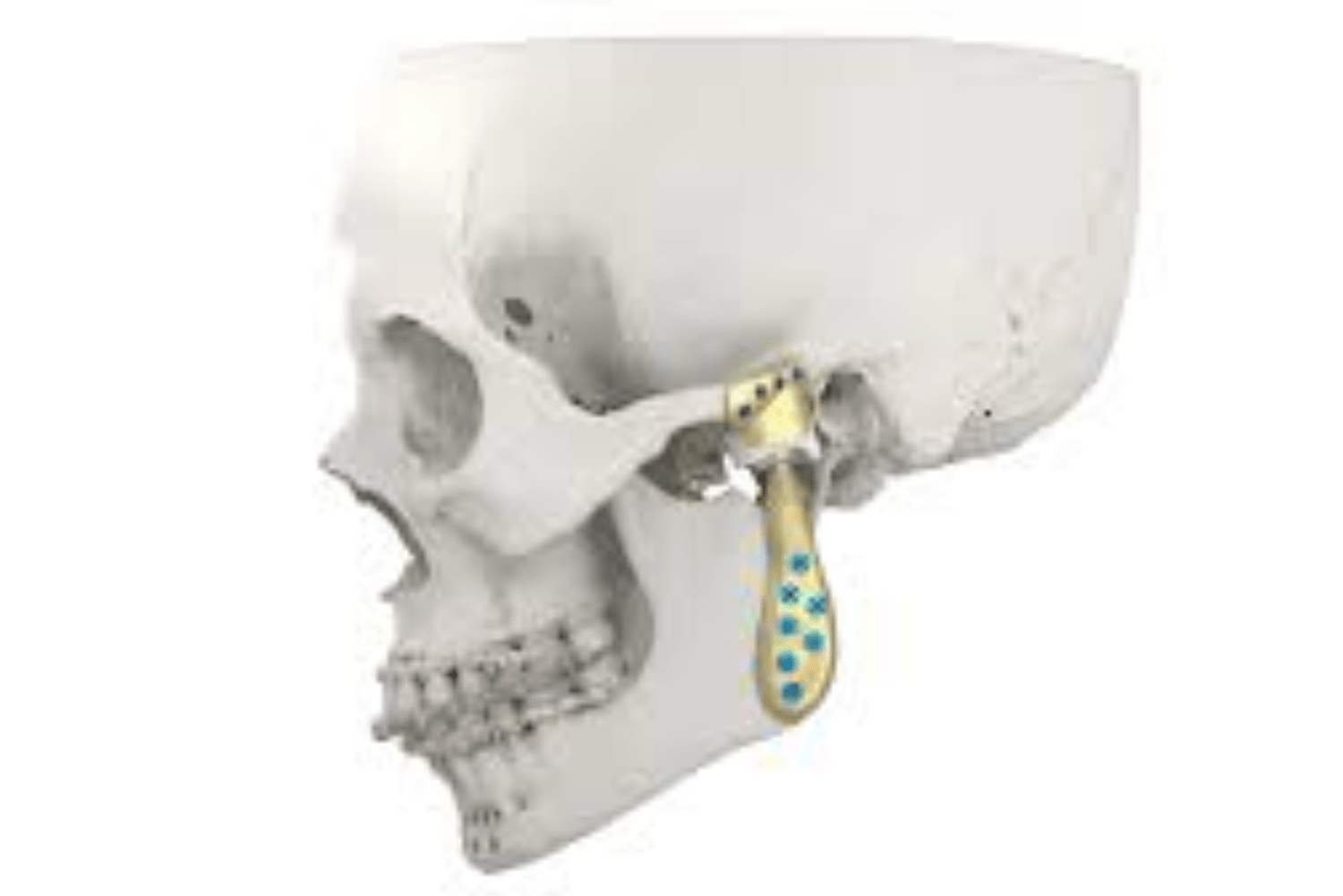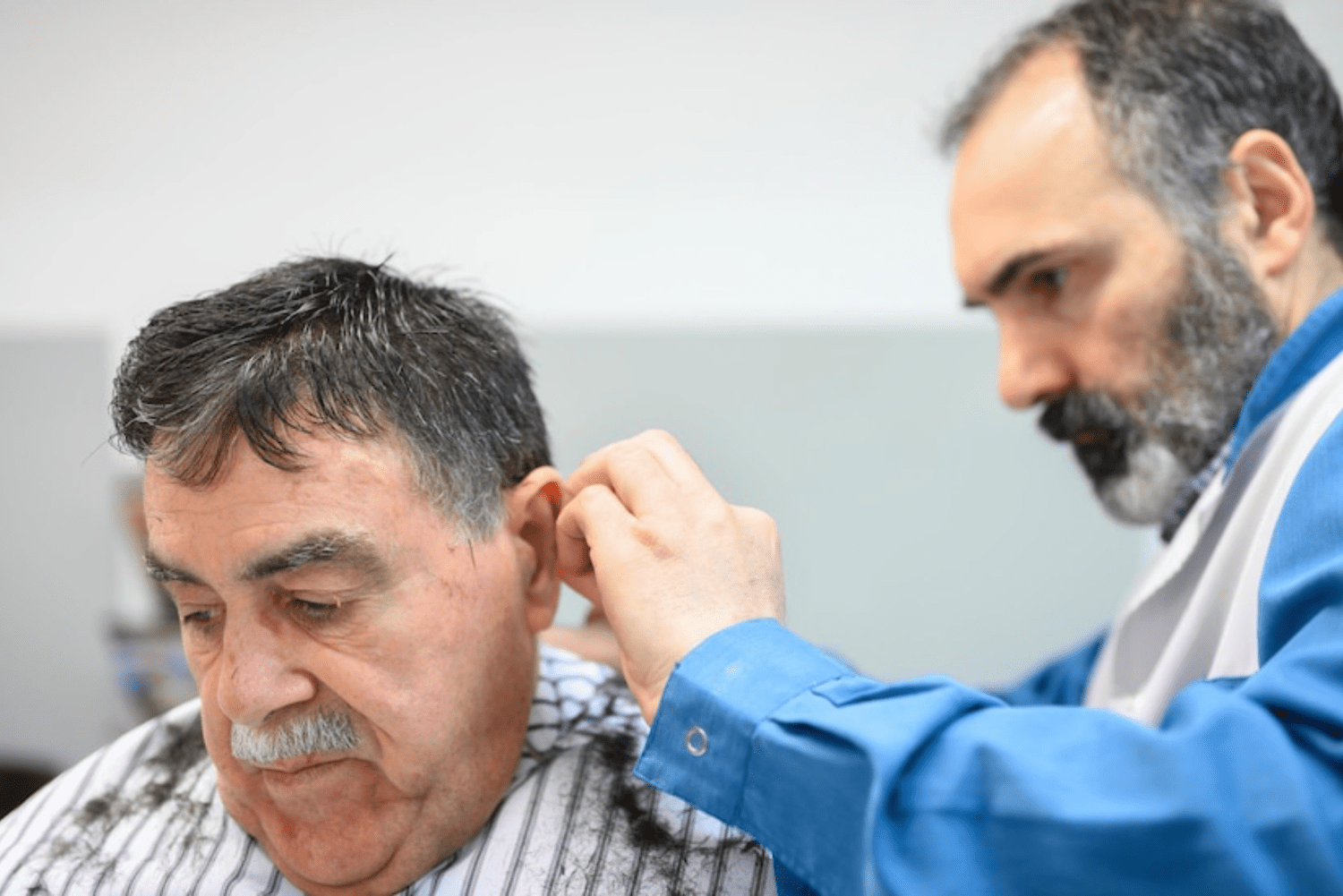The Temporomandibular Joint is a bony joint present behind the ears. It aids in jaw opening, movements, and chewing food. It is the only movable joint in the whole face. It is made of 2 bones: the mandible and the temporal bone of the skull. Temporomandibular Joint (TMJ) Replacement surgery is done when there is severe or end-stage temporomandibular disease that cannot be cured or treated by any other means. The whole joint is replaced with prosthetic parts or metal. It is best done at Richardson Face Hospitals, Bangalore.
When Is Temporomandibular Joint (TMJ) Replacement Done?
End-stage Temporomandibular Joint (TMJ) Replacement is not uncommon and affects quality of life. It can cause severe pain, stiffness, and limited mouth opening, significantly impacting a person’s ability to eat, speak, and socialize. TMJ replacement surgery helps restore the form and function of the joint as close as possible to the natural TMJ, improves quality of life, maintains ramal height to prevent facial asymmetry, and provides pain-free maximal incisal opening (MIO).
Indications:
-
Severe and non-responsive inflammatory arthritis
-
Recurrent or severe bony/fibrous ankylosis (joint fusion)
-
Failed prior tissue grafts or alloplastic joint reconstructions
-
Significant loss of mandibular height or occlusal function due to condylar resorption
-
Trauma
-
Pathological lesions
Conventional surgeries, such as gap arthroplasty and arthrectomy, for TMJ ankylosis carry a certain risk of re-ankylosis and/or open-bite jaw deformity. At Richardson Face Hospitals, the patient’s issue is thoroughly studied when choosing a treatment plan. For the functional and aesthetic reconstruction of the oral and maxillofacial head and neck region, Temporomandibular Joint (TMJ) Replacement significantly helps maintain the patient’s quality of life. It improves diet, mastication, speech, and social interaction, making Temporomandibular Joint (TMJ) Replacement a preferred solution for severe TMJ disorders.
TMJ Disorder Symptoms and Causes
Temporomandibular disorders (TMDs) are a group of more than 30 conditions that cause pain and dysfunction in the jaw joint and muscles that control jaw movement. In severe cases, Temporomandibular Joint (TMJ) Replacement may be considered.
It can cause a variety of symptoms like:
-
Jaw pain or tenderness in the jaw
-
Pain in one or both TM Joints
-
Aching pain in and around the ear
-
Difficulty chewing
-
Facial pain
-
Jaw locking
-
Jaw popping or clicking
-
Headaches
-
Migraines
-
Earaches
-
Toothache
-
Tinnitus
-
Malocclusion
For advanced cases where conservative treatments fail, Temporomandibular Joint (TMJ) Replacement can restore function and relieve chronic pain.
Injury to the jaw or temporomandibular joint can lead to some TMDs, but in most cases, the exact cause is not clear. For many people, symptoms seem to start without an obvious reason. Recent research suggests a combination of genes, psychological and life stressors, and how someone perceives pain, may play a part in why a TMD starts and whether it will be long-lasting. In severe or end-stage cases, Temporomandibular Joint (TMJ) Replacement may be considered to restore function and relieve pain.
What is Patient-Specific TMJ Reconstruction?
Patient-specific TMJ or custom devices are manufactured/printed from the preoperative CT scan data of the anatomy of the mandible and the skull of a particular patient. Custom-made TJR can adapt easily; no alteration of the patient’s bone is required. This ensures a precise fit, improved function and aesthetics, as well as long-term stability. Considering TMJR device design, the uniqueness of the mandibular ramus and temporal glenoid fossa anatomies do not lend themselves to the use of stock modular replacement components. The bony anatomy of the pelvis, femur, and tibia lends itself to the use of modular stock components. Therefore, for the foreseeable future, all TMJR components must be designed to be fixated and secured for stabilization. Patient-specific devices represent the next evolution in Temporomandibular Joint (TMJ) Replacement, providing tailored solutions for optimal outcomes.
What Does the Procedure Involve?
TMJR is done while you are fully asleep using a General Anaesthetic. The surgery is likely to take several hours. Where possible, all cuts to the skin will be in a skin crease to make them less visible. You will have an incision in front of your ear, which can extend into the hairline, to expose the top part of the joint. Some surgeons may shave a small amount of your hair in order to gain access to this area.
Another incision is made below your lower jaw to access the lower part of the joint. The degenerative/diseased part of your joint (in particular, the mandibular condyle) will be removed to make space for the new joint. The joint disc will also be removed. The new joint components will be fixed in place, forming your new jaw joint. This surgical process is part of a comprehensive Temporomandibular Joint (TMJ) Replacement procedure, designed to restore function and alleviate pain.
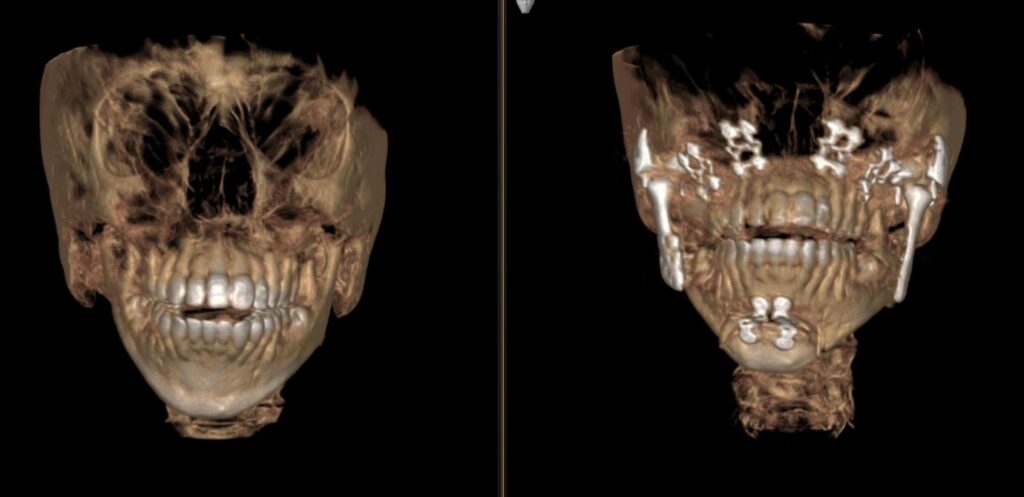
Often, a small drain will be inserted to collect excess fluid, such as blood. Alternatively, a bandage may be wrapped around your head. These will likely be removed the day after surgery. A jaw joint replacement is a complex and highly specialized procedure requiring meticulous planning and execution. Here’s what it entails:
Diagnosis and Planning:
A thorough clinical and radiological examination, including CT scans, is conducted to assess the joint damage.
The prosthetic components are then designed to the patient’s specifications for a successful Temporomandibular Joint (TMJ) Replacement.
Custom Manufacturing:
Components of the prosthesis are 3D printed in a laboratory for precision and durability. At the Best TMJ Replacement Hospital in India, advanced technology ensures accuracy in every step.
Materials Used:
The lower jaw component is made from metals like Cobalt-Chromium-Molybdenum or Titanium alloy.
The upper jaw component is designed from ultra-high-molecular-weight polyethylene.
The screws used are medical-grade, high-quality titanium screws.
Longevity of the Prosthesis:
The lifespan of the prosthesis depends on wear and tear after use and is expected to last around 20 years on average.
Hospital Stay
Patients are advised to stay at the hospital for 5–7 days. IV antibiotics and analgesics with anti-inflammatories are administered. Patients are closely monitored with regular dressings.
Discharge Criteria: Once patients can chew a soft diet and pain is controlled, they are discharged from the hospital with post-discharge instructions.
Post-Surgery Scan: A CBCT is taken after surgery at the hospital to ensure proper joint position and function.
Choose the Best Temporomandibular Joint (TMJ) Replacement Hospital in India for expert care, optimal recovery, and the best outcomes after TMJ joint replacement surgery.
Post-Treatment Care and Recovery:
During this phase, the patient is advised to stay in the hospital for a few days.
-
Intravenous pain medication and antibiotics are administered.
-
A soft diet is advised for a few weeks.
-
Jaw physiotherapy or exercises are recommended to improve jaw movement and strength.
-
Regular follow-ups are essential to monitor recovery and proper function of the jaws after Temporomandibular Joint (TMJ) Replacement.
Most patients recover within 3–4 weeks, achieving optimal mouth opening and jaw movements.
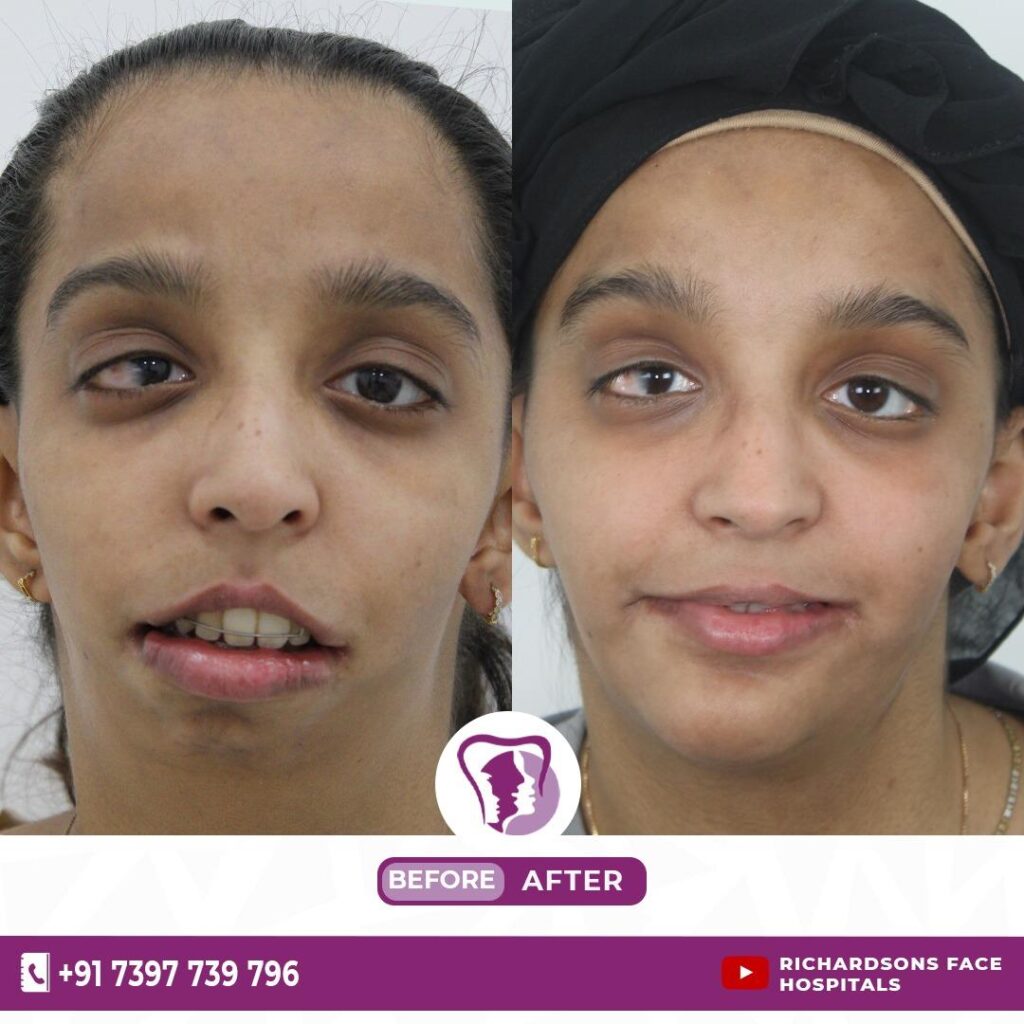
Complications of Temporomandibular Joint (TMJ) Replacement Surgery
Temporomandibular Joint (TMJ) Replacement surgery, like any major surgical procedure, carries potential risks and complications. Some possible complications include:
-
Derangement of occlusion
-
Dislocation of the condyle
-
Material hypersensitivity
-
Foreign body reaction
-
Periprosthetic joint infection
-
Temporary or permanent facial nerve paralysis
-
Component and/or fixation loosening
-
Device failure
-
Pain
These risks are generally rare, and thorough preoperative planning and post-operative care at a specialized center can help minimize them.
Disadvantages of Temporomandibular Joint (TMJ) Replacement
-
Cost of the prosthesis
-
Material wear and failure
-
Potential allergic reaction
-
Long-term stability
-
Inability to provide the growth required in skeletally immature patients
When to Consult a TMJ Specialist?
If you are suffering from chronic jaw pain, limited mobility, or have had failed previous TMJ surgeries, consult our experienced surgeons at Richardson Face Hospitals, Bangalore. We offer comprehensive evaluations and advanced Temporomandibular Joint (TMJ) Replacement procedures tailored to your condition.

